Back to table of contents
Bach Perspectives 11
J. S. Bach and His Sons
Web Companion 7: The Breslau Schloss and Shudi's Harpsichords (53–56; Table 7, p. 80)
|
| |
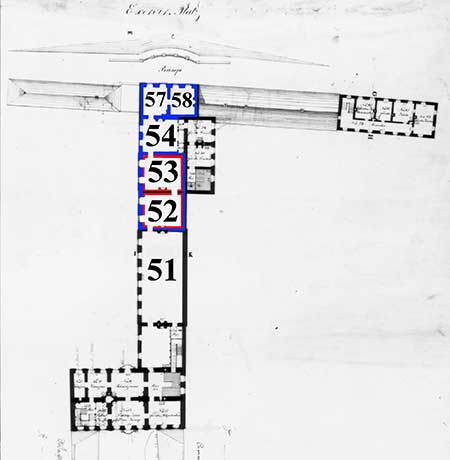 |
7.1 (p. 51): Breslau Schloss, 2nd floor,
Rear Wing (constructed 1751/52). Floor plan, Baron von Wilczeck, 1834/35,
including a portion of the apartments of Frederick II. By 1752 the music room,
bedroom, study, and library were habitable. This wing of the palace was
destroyed in World War II. Room numbers follow the floor plan and differ from
those of the palace inventories.
Room 51: Speisesaal (dining
salon)
Room 52: Concert-Saal (concert
salon); room IV, 1752 (p. 53)
Room 53: Concert-Zimmer (music
salon) (p. 53)
Room
54: Friedrich des Grossen Zimmer (Frederick "the Great" room), according to the
1835 floor plan
Room 57: Ausgangszimmer nach der
Rampe (exit chamber to the ramp)
Room 58: Bibliothek (library)
|
|
|
|
| |
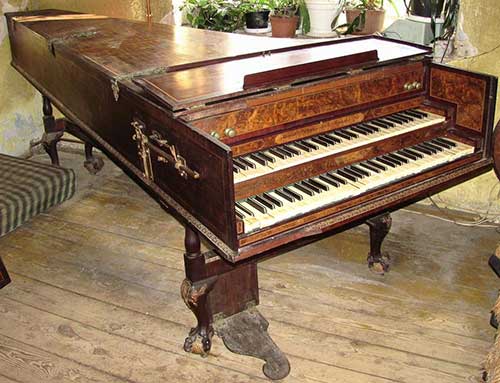 |
7.2 (pp.
53–55; Tables 7–8, pp. 80–81): Double-manual harpsichord by
Burkat Shudi, no. 496 (1765), prior to restoration. Formerly in the royal music
salon, Breslau Schloss, inventory number 73; acquired by the Museum of Musical Instruments, Poznań. Photo:
Beniamin Vogel, 2011.
The
instrument is pictured as it was in 2011, before a slight restoration was
undertaken. It measures 103 x 96 cm. At the time of writing the instrument
is on temporary loan to the Breslau Schloss museum. Note that the instrument does
not feature the elaborate gilding of harpsichords no. 511 and 512, and as such probably
represents the condition in which Shudi delivered nos. 511 and 512 to Potsdam (at
which point the gilding of those instruments in gold or silver, to match their
respective destinations, likely took place; see p. 58).
NB: The photos of this instrument have been generously
provided by Beniamin Vogel, the Polish organologist who in 2011 was the first
to identify the instrument, and whose personal inspection and evaluation of the
instrument brought it to light. My grateful thanks go to the Bach scholar Szymon
Paczkowsi for connecting me with Vogel, whose work came to my attention only after Bach Perspectives 11 had gone to
press.
|
|
|
|
| |
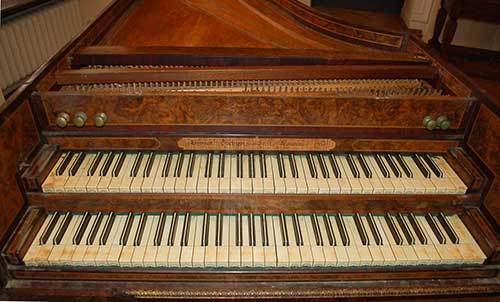 |
7.3: Shudi
harpsichord no. 496, close-up of the manuals (after restoration). Photo:
Beniamin Vogel, 2011.
|
|
|
|
| |
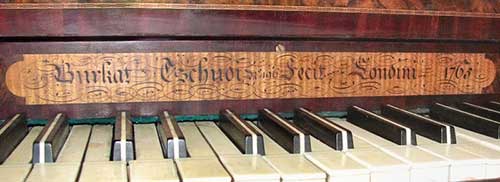 |
7.4: Shudi
harpsichord no. 496, name batten (prior to restoration). Photo: Beniamin Vogel,
2011.
|
|
|
|
| |
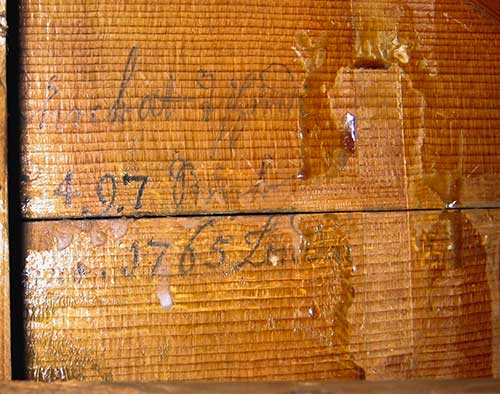 |
7.5: Shudi
harpsichord no. 496, detail of soundboard, signed and dated, but labeled no.
497: "Burkat Tschudi | 4.9.7. [. . .] | ao 1765 | Lond . . ." (see p. 55).
Photo: Beniamin Vogel, 2011.
|
|
|
|
| |
 |
7.6: Shudi
harpsichord no. 496, view of the manuals and two of the machine stop knobs
(pre-restoration). Note especially the veneer with colorful, burly wood grain, a
feature of this and the other Shudi harpsichords owned by Frederick II, which Charles
Burney, mistook for tortoiseshell during his visit to Potsdam (see p. 59).
Photo: Beniamin Vogel, 2011.
|
|
|
|
| |
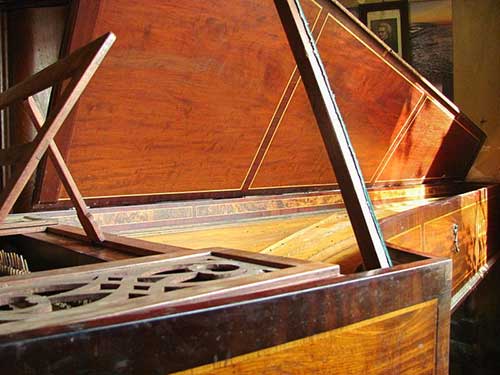 |
7.7: Shudi
harpsichord no. 496, close-up of the raised
lid and soundboard (pre-restoration). Photo: Beniamin Vogel, 2011.
|
|
|
|
| |
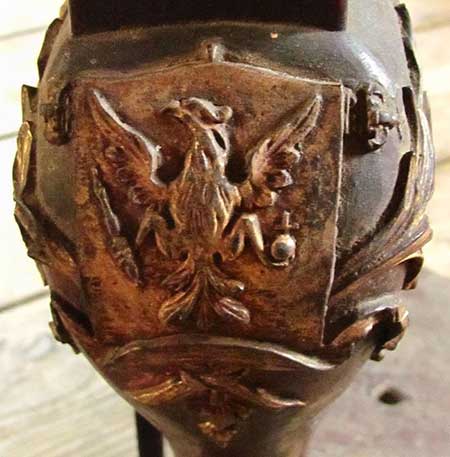 |
7.8: Shudi harpsichord no. 496, detail from one
of the legs (pre-restoration). Note the Prussian Eagle (coat of arms of the
Kingdom of Prussia) depicted in bas-relief. All of the stands Shudi created for
the king's instruments appear to have been specially designed with legs bearing
the Prussian coat of arms and cleverly matching ball-and-claw "eagle-feet" (compare 8.6d). Photo:
Beniamin Vogel, 2011.
|
|
|
|
Back to table of contents